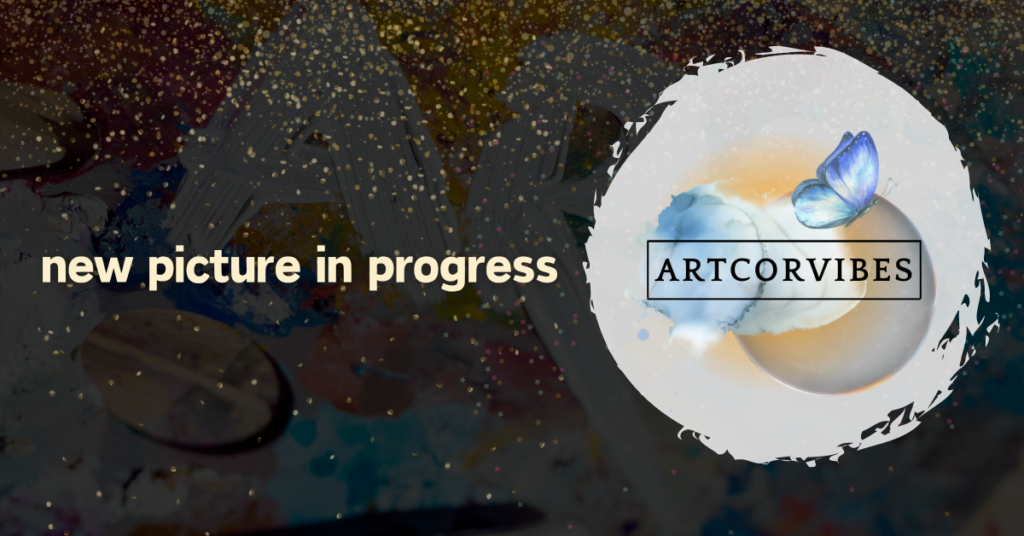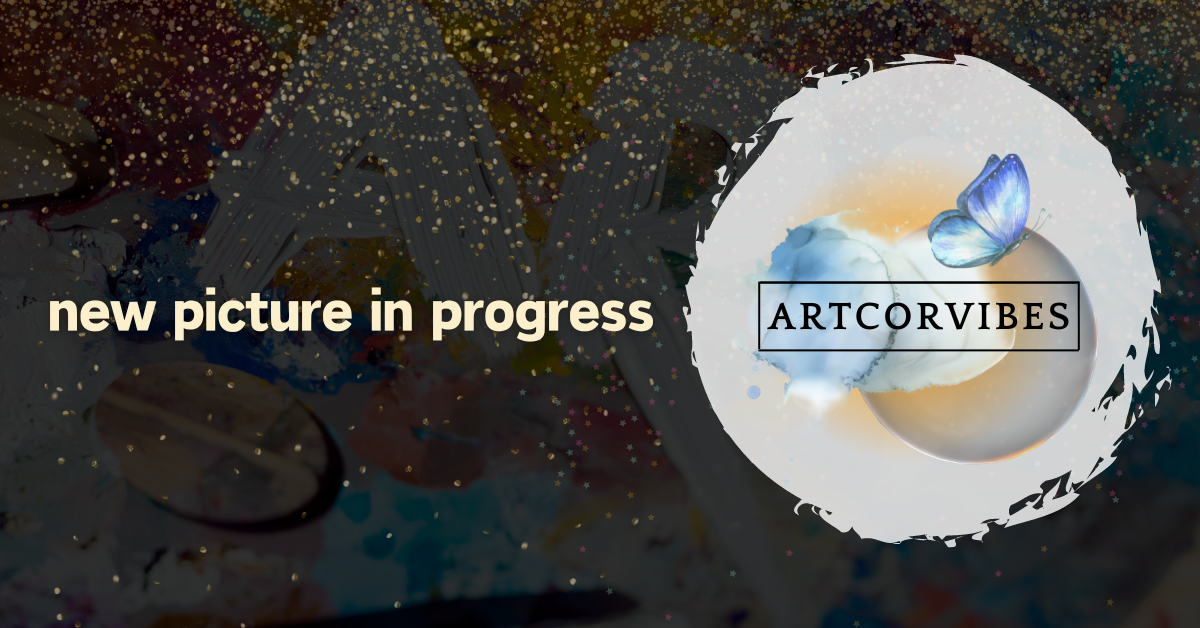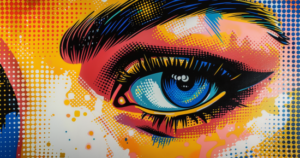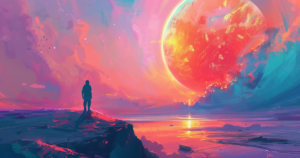The pop art movement, which emerged in the 1950s and 1960s, is celebrated for its bold, iconic designs influenced by everyday objects. If you’re eager to create your own pop art, you’re in luck because this style offers endless possibilities for personal expression. With a few straightforward techniques, you can transform ordinary items into vivid, eye-catching artworks!
Start Your Own Pop Art
To start creating your own pop art, you’ll need to explore the history, techniques, and characteristics of this unique art movement. Begin by examining renowned artists like Roy Lichtenstein and Andy Warhol, who used common consumer products and popular culture icons to make iconic art pieces.
In your pop art journey, experiment with different materials and themes, such as consumption and materialism. Feel free to indulge your creativity and play with vibrant colors and bold patterns. Don’t be afraid to take inspiration from everyday items and turn them into something extraordinary. Remember, the key to successful pop art is to enjoy the process and let your imagination soar!
History of Pop Art

Defining Pop Art
Pop art, which stands for popular art, emerged in the 1950s and gained popularity in the 1960s in both America and Britain. This artistic movement was inspired by commercial and pop culture, depicting everyday objects and scenes in a bold, attention-grabbing manner. It is rooted in Neo-Dada and other artistic movements that challenged the traditional definition of art.
You can learn how to make your pop art creations by drawing from various sources, including comic strips, soup cans, and other common items. There’s no hierarchy in the selection of culture, so be free to let your creativity run wild.
Notable Pop Artists
Some famous artists associated with the pop art movement include:
- Andy Warhol – Known for his iconic pop art paintings of Marilyn Monroe and the Campbell’s Soup Can series.
- Roy Lichtenstein – Recognized for incorporating comic strip aesthetics into fine art, using distinct techniques like the dotted Ben-Day dots printing process.
- Jasper Johns – His pieces often include symbols of American culture, like the American flag, which he incorporates into his work.
- Robert Rauschenberg – Famous for his inventive combinations of painting and sculpture, he would often use everyday objects and materials, giving them a new life in the world of art.
Creating your pop art can be an exciting and entertaining process, as you take inspiration from these notable artists while finding your unique perspective. Don’t hesitate to experiment with different techniques, materials, and themes to represent everyday life in a fascinating, vibrant way.
Materials Needed
Art Supplies
To begin your journey in creating pop art, you’ll need some basic art supplies. Start by acquiring a canvas or other surfaces for painting, like paper or wood panels. Next, purchase acrylic paints, which are ideal for pop art due to their vibrant colors and ease of use.
Make sure to have a variety of brushes for applying the paint, such as flat and round brushes in different sizes. Don’t forget about cutting tools, like scissors or craft knives, for cutting out stencils or other decorative elements.
To add more texture and interest to your work, consider using additional materials like glitter glue or fabric scraps. With these materials at hand, you’re now ready to explore some popular techniques used in pop art, like acrylic painting, silkscreen printing, collage, sculpture, stenciling, and photomontage, as explained in this guide.
Digital Tools
For those who prefer to create pop art digitally, there are various programs and tools available. Programs like Adobe Photoshop and Illustrator provide powerful features to manipulate images and create graphic designs reminiscent of the pop art style.
Using these digital tools, you can achieve techniques such as digital painting, image manipulation, and vector illustration. Additionally, you can easily incorporate elements from the original pop culture source material, like logos, typography, and comic book art, into your digital creations.
By combining your own creativity with the right digital tools, you can experiment with different techniques and styles to create your unique pop art masterpiece. Remember, practice and exploration are essential in developing your skills, so don’t be afraid to try new techniques and learn from other artists’ works and tutorials.
Creating Pop Art by Hand
Sketching the Outline
First, you need to decide on a subject for your pop art piece. It can be anything from your favorite celebrity, a product, or even a simple everyday object. Once you’ve chosen, start by sketching the outline of the subject using a pencil or a light-colored pen. Focus on capturing the basic shapes and lines, as you’ll be using these as guidelines for applying color later on.
Applying Color
Once you have your outline, it’s time to add some color! Pop art is known for its vibrant, energetic colors, so don’t be afraid to use bright shades. You can use various materials like acrylic paints, oil pastels, or colored pencils to fill in the shapes. Experiment with contrasting colors, blending, and shading to create a dynamic effect. Be sure to cover the entire canvas or paper to give your art that bold pop art look.
- Contrasting colors: Choose colors that stand out against each other, such as red and blue or yellow and purple.
- Blending: Mix and match colors together to create new shades, gradients, and soft transitions.
- Shading: Apply different colors to the same area to add depth and dimension.
Adding Details

Lastly, you’ll want to add some details to make your pop art piece truly unique and eye-catching. These can be anything from patterns and textures to slogans, catchphrases, or even comic book-style speech bubbles. Use a variety of techniques like stenciling, collage, or typography to incorporate these elements.
Here are some ideas to get you started:
- Patterns: Add geometric shapes, stripes, or polka dots to the background or subject of your piece.
- Textures: Use layers of paint or different types of paper to create a tactile effect.
- Slogans and catchphrases: Include popular phrases from advertising or popular culture, or make up your own.
- Comic book elements: Add speech bubbles or halftone dots to give your art a vintage, retro feel.
Now that you’ve got your tips and guidelines, you’re ready to create your own stunning pop art masterpiece. Have fun and let your creativity soar!
Creating Digital Pop Art

Choosing the Right Software
To create your own digital pop art, you will need the right software. There are various options available, and which one is best for you might depend on your needs and preferences. Some popular tools for creating pop art include BeFunky, Google Drawings, and Picsart. Each has its own features and capabilities, so explore the available options and choose the one that works best for you.
- BeFunky: A powerful online photo editor with pop art effects and digital art tools.
- Google Drawings: A free tool to create pop art from photos with easy-to-use digital art techniques.
- Picsart: A mobile and web-based art-making platform with multiple options for creating and editing pop art images.
Digital Drawing Techniques
Once you’ve chosen your software, it’s time to develop your digital drawing skills. Here are some commonly used techniques in pop art creation:
- Bold colors: Pop art is known for its vibrant and eye-catching colors. Use bold and contrasting colors to make your artwork stand out.
- Repeating patterns: A common technique in pop art is the repetition of an image or pattern. Include multiple versions of your subject in your artwork to create a sense of movement and depth.
- Outlines and shading: To achieve the distinctive look of pop art, use thick, dark outlines and minimal shading. This adds a sense of flatness to the composition, making it more graphic and visually appealing.
- Incorporate text: Many pop art pieces feature text, such as comic book-style speech bubbles or slogans. Consider adding text elements to your work to emphasize your message.
- Collage: Pop art often borrows elements from different sources, like magazine clippings or photographs. Try blending images from various sources in your artistic composition to create a unique and dynamic piece.
As you work on your digital pop art, remember to experiment and have fun! The more you practice, the more proficient you will become with these techniques, and the more your pop art creations will come to life.
Tips and Techniques
Color Theory in Pop Art
When you create pop art, pay attention to the colors you choose. Pop art often utilizes bright and bold colors like red, yellow, and blue. Familiarize yourself with color theory, which can help you create visually stimulating images. To accentuate the primary colors, incorporate contrasting hues and complementary colors. Also, try to create a compelling balance of warm and cool colors. Experiment with different acrylic paint and oil pastels to achieve the desired vibrancy.
Incorporating Text
Another key element of pop art is incorporating text. This technique can make your artwork visually striking and bring attention to important messages. Since pop art often features media and advertising references, using recognizable fonts and catchy phrases will enhance its impact. Some techniques include:
- Bold and capitalized text
- Stylized typography
- Thought and speech bubbles
- Catchy phrases and slogans
Stylization Tips

Stylization can elevate your pop art piece. Consider employing these techniques:
- Silkscreen printing: A classic approach often associated with Andy Warhol. This technique allows creating multiple copies of the same image with various color schemes.
- Collage: Cut and paste images, text, or patterns to create a new work of art. Mix and overlap elements for added visual interest.
- Stenciling and spray painting: Stencils help create a uniform and organized appearance, while spray painting can add texture and movement.
- Inking techniques: Experiment with dot, line, and cross-hatching techniques to achieve the appearance of comic book-style art, as exemplified by Roy Lichtenstein.
Remember to keep your ideas playful and fun, especially when drawing inspiration from everyday objects or popular culture.
What do you associate with pop? Feel free to share your experiences with pop art in the comments.
What objects should you use in pop art?
In pop art, common objects include consumer goods, comic strips, advertisements, celebrities, and mundane items like soup cans, comic strips, soda bottles, and household appliances.
Which apps turn photos into pop art?
Apps like PopArt Studio, Prisma, PicsArt, and Adobe Photoshop Express can transform photos into pop art.
What is the first pop art?
The first works considered pop art are Richard Hamilton’s “Just What Is It That Makes Today’s Homes So Different, So Appealing?” (1956) and Eduardo Paolozzi’s “I was a Rich Man’s Plaything” (1947).







